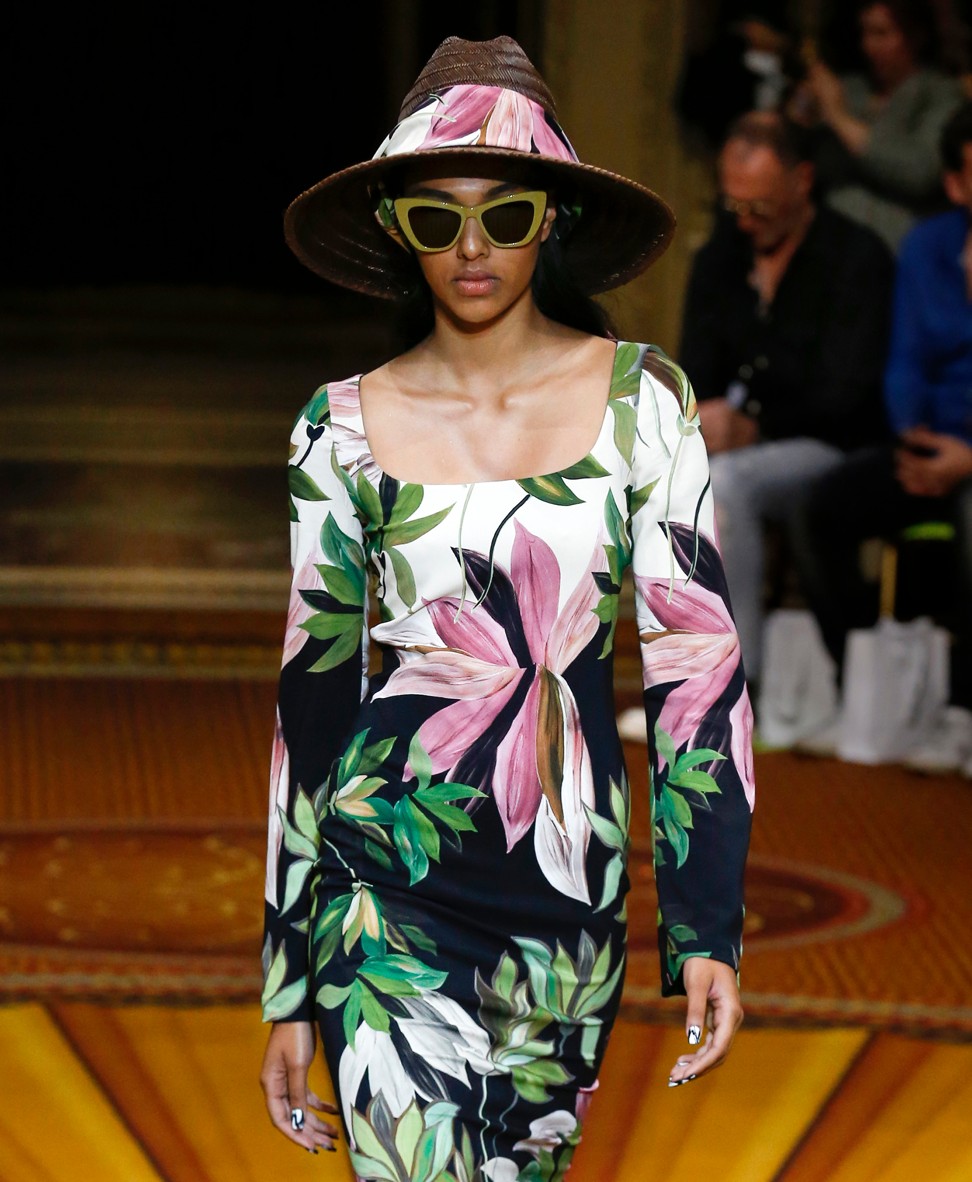
Singapore’s next top model is bringing much needed diversity to runways around the world
- The Lion City’s newest ‘It’ model, Diya Prabhakar, made her debut at Paris Fashion Week this season
- The six-foot-tall Singaporean-Indian model wants to be the voice for inclusivity in the industry
When model Diya Prabhakar stepped off the plane in New York a few months ago, she had another runway to hustle to. Prabhakar had an appointment with acclaimed Nepalese-American fashion designer Prabal Gurung, who was searching for an all-Asian cast to front his autumn-winter 2018 ad campaign.
With a shock of curly hair and pouty lips, the six-foot-tall Singaporean-Indian model snagged a spot on the campaign, which includes four other faces from China, Nepal, South Korea and Thailand. She impressed Gurung enough that he also cast her for his spring-summer 2019 catwalk show in New York.
“I was very excited because he is such an influential designer and he could cast any model he wants, so the fact that he wanted me was a big deal,” says Prabhakar in a phone interview from New York, where she is based.
In an industry dominated by social media superstars with last names like Hadid and Jenner, Prabhakar’s rise as an unknown – and minority – face in the industry is a remarkable achievement.
This season, she also walked for Christian Siriano’s spring-summer 2019 show and made her debut at Paris Fashion Week, the pinnacle of achievement for a new model. In Paris, the 19-year-old modelled for edgy designers including Marine Serre, Manish Arora and Hong Kong-based Anaïs Jourden.
While it may seem like she has just burst onto the scene, it has actually taken her four years to build up her portfolio. As a part-time model in 2014, she was talent-spotted while in her school uniform in Singapore to take part in The New Paper New Face modelling competition. When she won the contest, she decided to use it as a stepping stone to build her career.
In between school and exams, she took part in fashion weeks in India and appeared in magazines including Grazia China, Marie Claire UK and Vogue India. After she finished school last year, Prabhakar relocated to London to pursue her modelling career.


She says the reality of being a working model in London, Paris and New York is very different to what the gossip rags portray. “Everyone is so nice. I’ll be like, ‘Oh my phone’s dying’, and some random model will offer me her portable charger,” she says, of what happens during the long hours of casting and rehearsals. “We are all from different countries, so everyone is trying to find someone to connect with. I’m sure, like in every business, there’s one or two people who are mean, but most of the people I’ve met are so nice.”
Prabhakar counts herself lucky that she has strong family support to keep her going; Prabhakar’s mother often travels with her to keep her company. The one thing she says she really misses is bubble tea. “The shops that sell bubble tea overseas are not as good as Koi or Gong Cha,” she says with a laugh.
As she continues to build her career, Prabhakar says she looks to top models like Gisele Bundchen for inspiration. “One thing I really want is to have a family and kids, and time to spend with them. I love Gisele because not only is she a top model, but she is able to balance both family and work. That is what I aspire to,” she says.
For now, it is back to breaking boundaries and bringing much-needed diversity to runways and magazines. “The industry is slowly changing and is becoming more accepting of different colours, skin tones and models from different parts of the world,” she says.
But there are still limitations, especially because casting a woman of colour can feel like a token gesture, she observes. “Even if a designer likes more than one girl [of colour], there is only one spot [on the campaign],” she says. “At this point in time, I don’t really have a choice, but I wish I could stand up and say this is not fair. I do appreciate that things are changing.”
This is why having the opportunity to work with Prabal Gurung, an outspoken voice for diversity and inclusivity in the fashion industry, means so much to her.
“It is so inspiring to see someone who is so successful have an opinion and a voice for the people,” she says. “When I grow up, I want to have a voice that people will want to listen to.”

